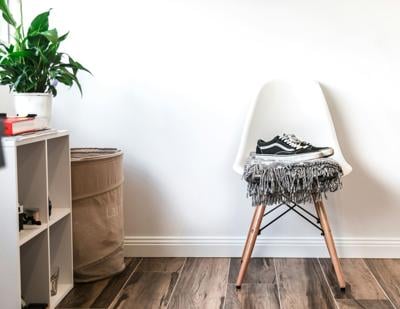
Timber laminate is one of the world’s most popular flooring options. It’s sold in planks that look just like real timber, but it costs a fraction of the price.
The only downside to laminate flooring is that it’s made of a soft plastic. While these plastics are tough against everyday wear and tear, they can be prone to scratching, which causes them to look scuffed and hazy over time.
If you have timber laminate in your home, regular cleaning and maintenance is the best thing you can do to extend its life.
But, just like real timber flooring, laminate has a few special cleaning requirements. Using the right tools and laminate floor cleaner prevents damage, so it’s important to focus your effort in the right places.
In this article, we’ll cover everything you need to know about cleaning timber laminate flooring to get the best results!
1. Clean Up Spills Immediately
The golden rule with all types of timber flooring is to avoid allowing spills to sit on the floor for too long. While most types of timber laminate flooring are made from durable PVC, liquid spills can still seep into the plastic and between the individual boards. This may cause the floor to lift, warp and discolor.
If you spill anything on the floor – including water – clean it up immediately. Spills of acidic liquids such as citrus juice and wine have the potential to stain and damage the flooring very quickly, so they should be wiped up straight away.
2. Vacuum on a Weekly Basis
Dirt and grit are the enemy of laminate flooring. Tiny particles of dirt can contain hard substances like sand, which create minor scratches in the surface as you walk along the floor.
Vacuuming on a weekly basis keeps dirt and grit under control and will go a long way to preventing your floors from developing a hazy finish. We recommend using a vacuum cleaner with a soft bristle attachment that’s designed for hard flooring. If you’re using a rolling vacuum, avoid dragging it along the floor behind you.
For best results, the vacuum’s bristle attachment should also be regularly cleaned so that it doesn’t collect gritty particles which may scratch the floor. For those dealing with concrete floors, you can find useful tips on proper cleaning techniques at SweepScrub to ensure a thorough and effective clean.
3. Mop Once Per Month
Vacuuming your flooring will only remove loose particles of dirt. It won’t get rid of oil, grease, stains and anything else that’s stuck to the floor. You’ll need to support your cleaning regimen by mopping once every month.
Timber laminate flooring can be susceptible to excess moisture. When mopping, it’s best to use a spray mop, or a damp microfibre mop, combined with an appropriate laminate floor cleaner. If you’re using a conventional cotton or sponge mop, make sure it’s wrung out until slightly damp. Never mop a laminate floor with a soaking wet mop.
A quick word about laminate floor cleaners. Timber laminate flooring is made of PVC that’s printed to look like real wood. This type of flooring features a clear top layer that protects the painted layer from scratches and stains. Harsh cleaning products can damage this protective layer and significantly shorten the life of your flooring.
Laminate floors should always be mopped with a cleaning product that’s designed for the task. These types of cleaners are gentle and they leave behind a protective coating that extends the longevity of your floors.
4. Use Felt Pads on Furniture
We’ve already talked about how soft laminate flooring can be. That makes it prone to scratching during normal use. This is a significant problem when it comes to furniture.
Furniture like chairs and tables shift slightly during normal use. If gritty particles are trapped beneath the legs of furniture, they grind into the surface of your flooring, causing deep scratches that are impossible to remove.
This can be prevented by adding felt pads to the legs of all furniture that’s used regularly. Felt pads are a simple and cheap way to protect laminate flooring.
The only thing to keep in mind is that the felt will trap dirt, hair and oils over time. They need to be replaced every 12-24 months to ensure they don’t begin scratching your floors during normal use.
5. Invest in a Surface Protectant
If you’re regularly cleaning and mopping your floors, you’re already doing a lot to extend their lifespan. The final piece of the puzzle is to invest in a protective product.
Laminate protectors are liquid products that wipe on and form a durable coating. This coating will wear off during daily use, but it provides excellent protection in between applications. These types of products are ideal for high traffic areas, and for homes with small children where the risk of spills and stains is higher.
While it takes a little bit of extra effort to clean and apply protective coatings, the result is worth it, and they can add years of use to your laminate flooring.


(0) comments
We welcome your comments
Log In
Post a comment as Guest
Keep it Clean. Please avoid obscene, vulgar, lewd, racist or sexually-oriented language.
PLEASE TURN OFF YOUR CAPS LOCK.
Don't Threaten. Threats of harming another person will not be tolerated.
Be Truthful. Don't knowingly lie about anyone or anything.
Be Nice. No racism, sexism or any sort of -ism that is degrading to another person.
Be Proactive. Use the 'Report' link on each comment to let us know of abusive posts.
Share with Us. We'd love to hear eyewitness accounts, the history behind an article.